OP: “New Stranger” by sora tob sakana
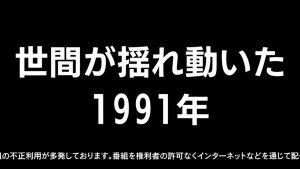 It seems almost surreal to be writing this review, to be honest. And kind of emotional, too – similar to how it was with Planet With in the sense that this has been a very, very long time coming. Oshikiri Rensuke’s manga has been a favorite of mine almost since its inception – even as well-regarded as it is, I would argue very under-appreciated (for reasons that aren’t fully illustrated in the story right out of the gate – be patient). It scores points for uniqueness, subtlety and pathos – a series that aims high and has the chops to pull it off. But a smooth trip, it hasn’t had.
It seems almost surreal to be writing this review, to be honest. And kind of emotional, too – similar to how it was with Planet With in the sense that this has been a very, very long time coming. Oshikiri Rensuke’s manga has been a favorite of mine almost since its inception – even as well-regarded as it is, I would argue very under-appreciated (for reasons that aren’t fully illustrated in the story right out of the gate – be patient). It scores points for uniqueness, subtlety and pathos – a series that aims high and has the chops to pull it off. But a smooth trip, it hasn’t had.
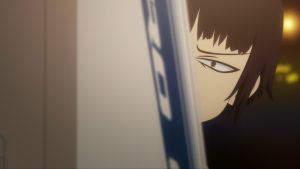 I don’t want to devote a ton of time to the travails of Hi Score Girl (that is how it’s correctly Romanized, by the way), and many of you know this stuff already, but it’s important. An anime was announced in 2014 and fans celebrated – but then disaster struck. Because Square Enix (the publisher) had failed to get the proper permissions for the use of trademarked game characters, the dickheads at SNK Playmore sued (despite the fact that the free publicity HSG gave them was extremely good for their franchises). Not only was the anime shelved, but the manga was forced to cease publication and existing volumes yanked from the shelves as civil and criminal cases worked through the courts. Eventually the manga serialization was given permission to resume, but the anime seemed like a lost cause.
I don’t want to devote a ton of time to the travails of Hi Score Girl (that is how it’s correctly Romanized, by the way), and many of you know this stuff already, but it’s important. An anime was announced in 2014 and fans celebrated – but then disaster struck. Because Square Enix (the publisher) had failed to get the proper permissions for the use of trademarked game characters, the dickheads at SNK Playmore sued (despite the fact that the free publicity HSG gave them was extremely good for their franchises). Not only was the anime shelved, but the manga was forced to cease publication and existing volumes yanked from the shelves as civil and criminal cases worked through the courts. Eventually the manga serialization was given permission to resume, but the anime seemed like a lost cause.
 Now, four years later, it’s almost comical that Hi Score Girl was snatched up by Netflix Japan – the proverbial insult to injury. It’s the worst of both worlds, really – no streaming, and not even the annoying Netflix U.S. batch dump until after the series has fully aired. As Adlai Stevenson said, “It hurts too much to laugh, and I’m too old to cry.” Being dependent on fansubs in the age of streaming is a nightmare, and while I’m very grateful to whatever anon eventually did sub this premiere, I’m filled with trepidation about what the future holds. A CGI adaptation of a modestly but not hugely popular unlicensed (in English) manga may just fall through the subbing cracks altogether.
Now, four years later, it’s almost comical that Hi Score Girl was snatched up by Netflix Japan – the proverbial insult to injury. It’s the worst of both worlds, really – no streaming, and not even the annoying Netflix U.S. batch dump until after the series has fully aired. As Adlai Stevenson said, “It hurts too much to laugh, and I’m too old to cry.” Being dependent on fansubs in the age of streaming is a nightmare, and while I’m very grateful to whatever anon eventually did sub this premiere, I’m filled with trepidation about what the future holds. A CGI adaptation of a modestly but not hugely popular unlicensed (in English) manga may just fall through the subbing cracks altogether.
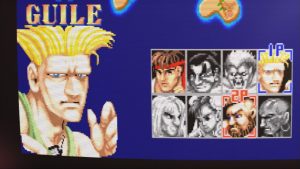 But I suppose all a fan can do is enjoy whatever they get. That was pretty much my attitude when it was revealed that the HSG anime would be full CGI – yeah it hurt, but after four years I was just glad to get any kind of bite of the apple. One can almost make a case that CGI is an artistic choice here, given that Hi Score Girl is built around 25-30 year old arcade games, but to me it seems more likely it was a convenient excuse to make a financial decision. And the CGI is actually pretty good – it does indeed look very natural when we’re watching Street Fighter II, though obviously less so when the focus is on the actual characters. Is it ideal? No – but again, after the torture this saga has provided I’ll take what I can get.
But I suppose all a fan can do is enjoy whatever they get. That was pretty much my attitude when it was revealed that the HSG anime would be full CGI – yeah it hurt, but after four years I was just glad to get any kind of bite of the apple. One can almost make a case that CGI is an artistic choice here, given that Hi Score Girl is built around 25-30 year old arcade games, but to me it seems more likely it was a convenient excuse to make a financial decision. And the CGI is actually pretty good – it does indeed look very natural when we’re watching Street Fighter II, though obviously less so when the focus is on the actual characters. Is it ideal? No – but again, after the torture this saga has provided I’ll take what I can get.
 There’s also the matter of length. I’m basically assuming this is going to be one cour, given that Hi Score Girl has pretty much gotten screwed in every way possible since its inception. Rensuke-sensei announced he’d be ending the series with the 10th volume this coming winter, and I suppose JC Staff could do a decent enough telling if they had two cours to do it, but I have no idea what they could come up with in one. This is not a story designed to be absorbed in bite-size chunks – effectively Hi Score Girl is one long arc taking place over several years, with each development flowing into the next rather than providing intermediate conclusions.
There’s also the matter of length. I’m basically assuming this is going to be one cour, given that Hi Score Girl has pretty much gotten screwed in every way possible since its inception. Rensuke-sensei announced he’d be ending the series with the 10th volume this coming winter, and I suppose JC Staff could do a decent enough telling if they had two cours to do it, but I have no idea what they could come up with in one. This is not a story designed to be absorbed in bite-size chunks – effectively Hi Score Girl is one long arc taking place over several years, with each development flowing into the next rather than providing intermediate conclusions.
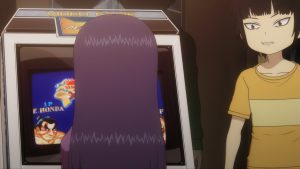 Which is like adolescence, basically – and that’s really the point. Rensuke’s manga is many things – a romance (one of the more interesting teen romances in manga), a coming of age story, an homage to the world of Rensuke’s youth. There may be a generational element to why it resonates so with me, but HSG is almost eerily on-point in its depiction of the experience of growing up. Main character Yaguchi Haruo (Amasaki Kouhei) is superficially a loser of a kid – addicted to arcade gaming (which is still popular here, despite the rise of console gaming), terrible at school, not popular with girls. But like most 12 year-olds, Haruo has a very well-defined sense of his world, and Hi Score Girl reflects that. This story is his experience (and Rensuke-sensei’s) in the same way FLCL is Naota’s and Tsurumaki Kazuya’s.
Which is like adolescence, basically – and that’s really the point. Rensuke’s manga is many things – a romance (one of the more interesting teen romances in manga), a coming of age story, an homage to the world of Rensuke’s youth. There may be a generational element to why it resonates so with me, but HSG is almost eerily on-point in its depiction of the experience of growing up. Main character Yaguchi Haruo (Amasaki Kouhei) is superficially a loser of a kid – addicted to arcade gaming (which is still popular here, despite the rise of console gaming), terrible at school, not popular with girls. But like most 12 year-olds, Haruo has a very well-defined sense of his world, and Hi Score Girl reflects that. This story is his experience (and Rensuke-sensei’s) in the same way FLCL is Naota’s and Tsurumaki Kazuya’s.
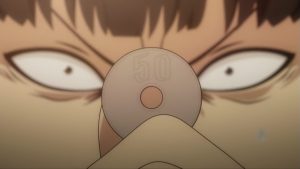 The story begins in 1991, when Haruo is in 6th grade, a boy spending most of his time in his “refuge” – an arcade in the next town where he won’t get hassled for violating school rules against such places. Haruo is aware that society looks down on kids like him, but doesn’t really care – he’s happy with the little niche he’s carved for himself, and very good at what he does. Games are his life, especially fighting games like Street Fighter. But one day his sanctuary is invaded by Oono Akira (Suzushiro Sayumi), a girl Haruo sees as the anti-Haruo. She’s rich, popular, and most irritatingly, proves to be a genius at gaming. The indignity of it is almost too much for him to bear.
The story begins in 1991, when Haruo is in 6th grade, a boy spending most of his time in his “refuge” – an arcade in the next town where he won’t get hassled for violating school rules against such places. Haruo is aware that society looks down on kids like him, but doesn’t really care – he’s happy with the little niche he’s carved for himself, and very good at what he does. Games are his life, especially fighting games like Street Fighter. But one day his sanctuary is invaded by Oono Akira (Suzushiro Sayumi), a girl Haruo sees as the anti-Haruo. She’s rich, popular, and most irritatingly, proves to be a genius at gaming. The indignity of it is almost too much for him to bear.
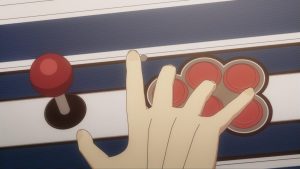 I will say this – it would be a mistake to read too much into the first couple of chapters of Hi Score Girl. They provide only a hint of what’s to come – they’re much more conventional than the story that follows. In terms of those early chapters I think Yamakawa Yoshiki (Little Busters!) does a good job of translating them to the screen – the feel of the manga comes across pretty well, without a lot of stylistic embellishment. But the real test is what comes soon, and later – when Hi Score Girl and Haruo’s story evolve in ways unexpected and rather profound. This series is both a snapshot of an era and timeless, in ways that will only be fully revealed if the anime gets enough time to do the series justice. I’m not expecting that, but if being a fan of Hi Score Girl has taught me anything, it’s to temper my expectations for the way the series is treated. It deserves better and so do we, but whatever we get is certainly better than nothing.
I will say this – it would be a mistake to read too much into the first couple of chapters of Hi Score Girl. They provide only a hint of what’s to come – they’re much more conventional than the story that follows. In terms of those early chapters I think Yamakawa Yoshiki (Little Busters!) does a good job of translating them to the screen – the feel of the manga comes across pretty well, without a lot of stylistic embellishment. But the real test is what comes soon, and later – when Hi Score Girl and Haruo’s story evolve in ways unexpected and rather profound. This series is both a snapshot of an era and timeless, in ways that will only be fully revealed if the anime gets enough time to do the series justice. I’m not expecting that, but if being a fan of Hi Score Girl has taught me anything, it’s to temper my expectations for the way the series is treated. It deserves better and so do we, but whatever we get is certainly better than nothing.
ED: “Houkago Distraction” (Afterschool Distraction) by Etsuko Yakushimaru


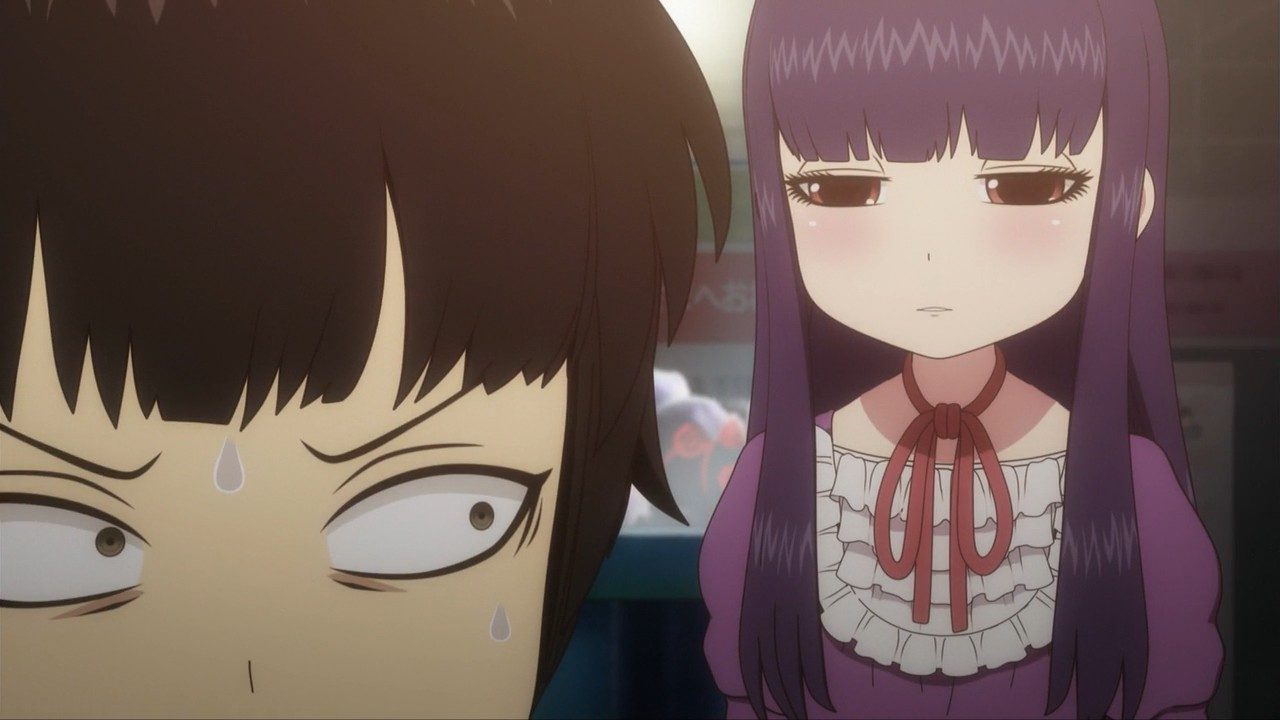
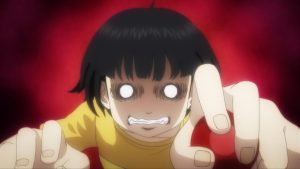
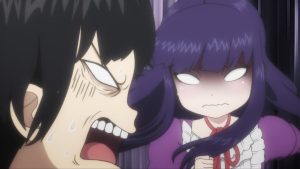
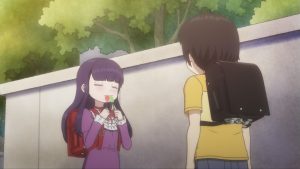
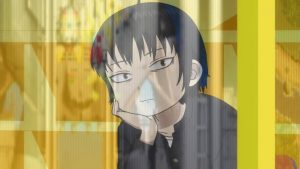
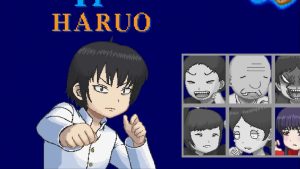
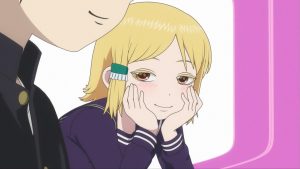

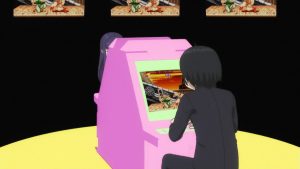
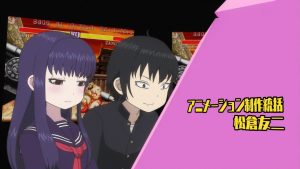
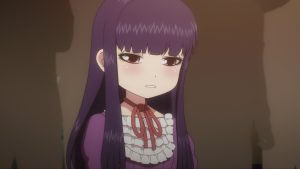
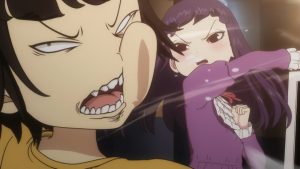
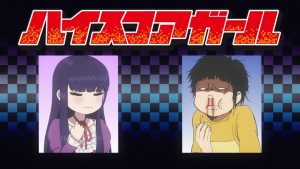
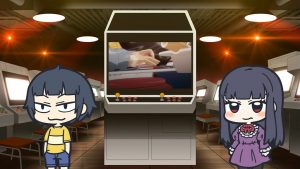
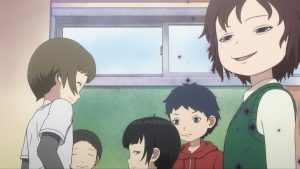
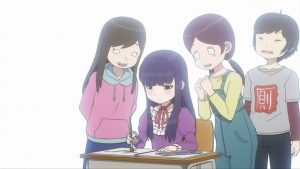

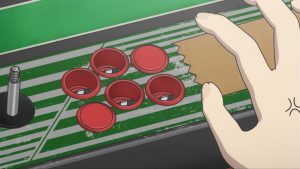
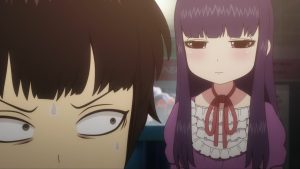

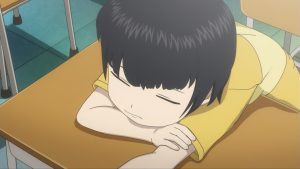


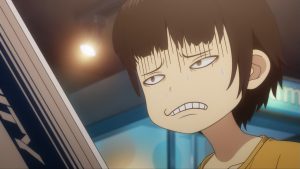
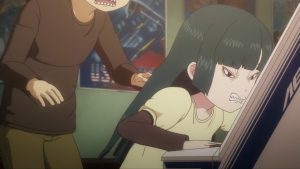
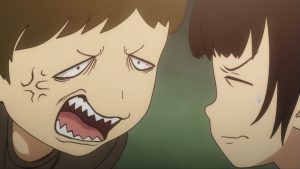
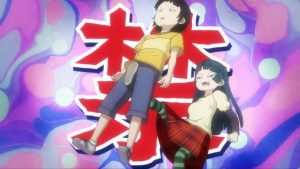
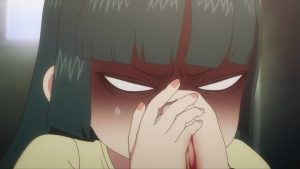
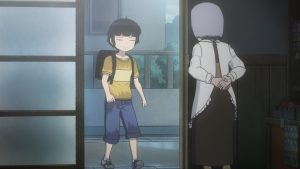

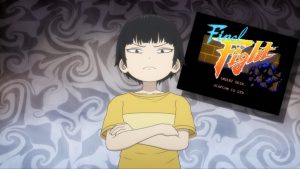
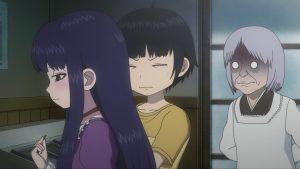
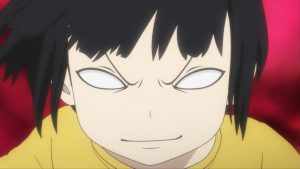


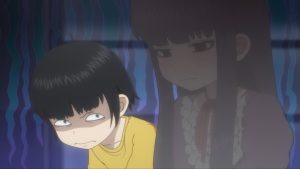
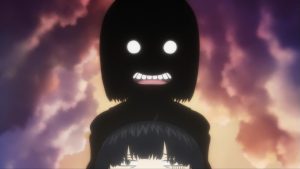


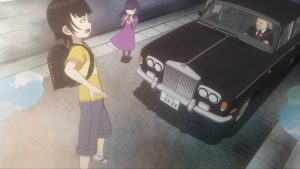
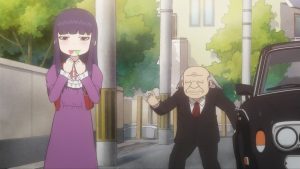

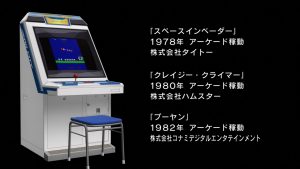
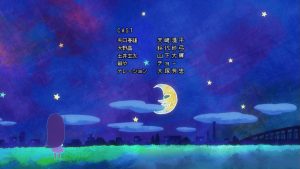
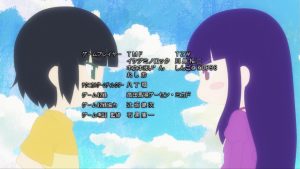
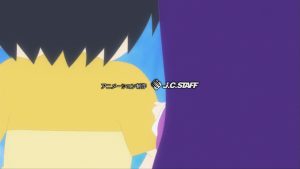


Sam
July 15, 2018 at 4:15 pmdickheads at SNK Playmore? Gonna assume that this is just a fan biased off the cuff remark. Surely you aren’t serious with the mini rant there. 🙂
Oshikiri is not just some random fan drawing and making small pocket change off his site, but a legitimate mangaka with a legitimate publisher and making money off of him and the publisher, etc.
Probably the most of the blame goes to Square Enix for not doing their job properly and not protecting him (Oshikiri) enough for the situation to go so bad for a while.
Based on what I read, Square Enix was kinda sloppy and surprisingly not professional early on – like using characters and publishing anyway to force some companies to give them permission instead of properly sorting it out beforehand. It worked for some companies as they were a bit more chilled about the whole copyright infringement situation while evidently SNK Playmore were not. But I can’t blame SNK too much in this case. Some useful info could be found on articles linked to Japanese wiki site for Hi Score Girl.
And not like SNK went and sent Osaka police raid right away. They contacted Square Enix back in 2013 about using their characters without permission and more likely that they both tried to play a hard ball with each other – got no reason to assume that one company was somehow some angel figure here when discussing ¥ ¥ – then eventually a year later and that whole mess.
Sam
July 15, 2018 at 4:21 pmmoney “for” him and the publisher, etc. oops. This is no some David vs. Goliath situation (i.e. not Oshikiri vs. SNK Playmore) but a mangaka caught between two corporation fight.
Guardian Enzo
July 15, 2018 at 4:44 pmWhether you blame SNK or Square Enix is a legit debate, but Ohsikiri certainly isn’t to blame. He assumed (and was told) that Square Enix had gotten all the relevant permissions. Square Enix was indeed lazy and sloppy, but my take is that SNK massively overreacted. They benefited from this relationship.
Psyric
July 16, 2018 at 10:18 amI was wondering why I hadn’t seen this show on CrunchyRoll yet. It really does frustrate me when Netflix picks up a series like this-unless it truly is a ‘Netflix Original’ (Like Devilman Crybaby), having to wait for a show to complete it’s normal run so that the whole thing can be batch released is an excruciating and frustrating experience that I feel just damages the show. I strongly disliked the practice with both Violet Evergarden and the ongoing Jushinki Pandora.